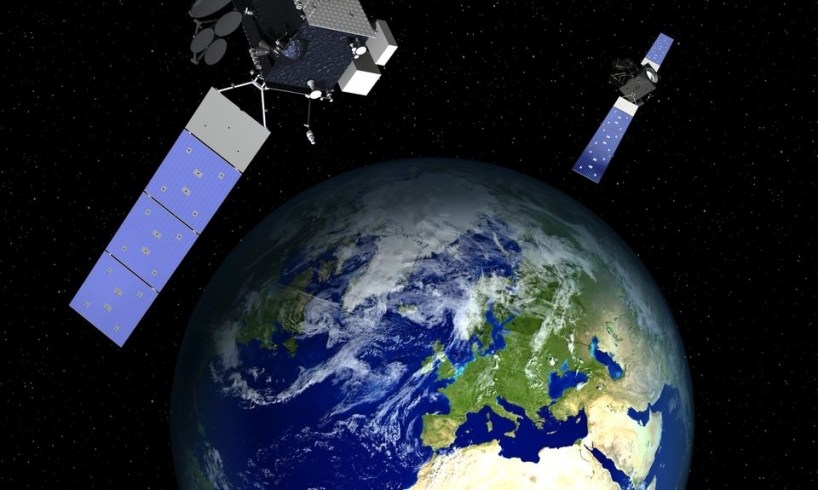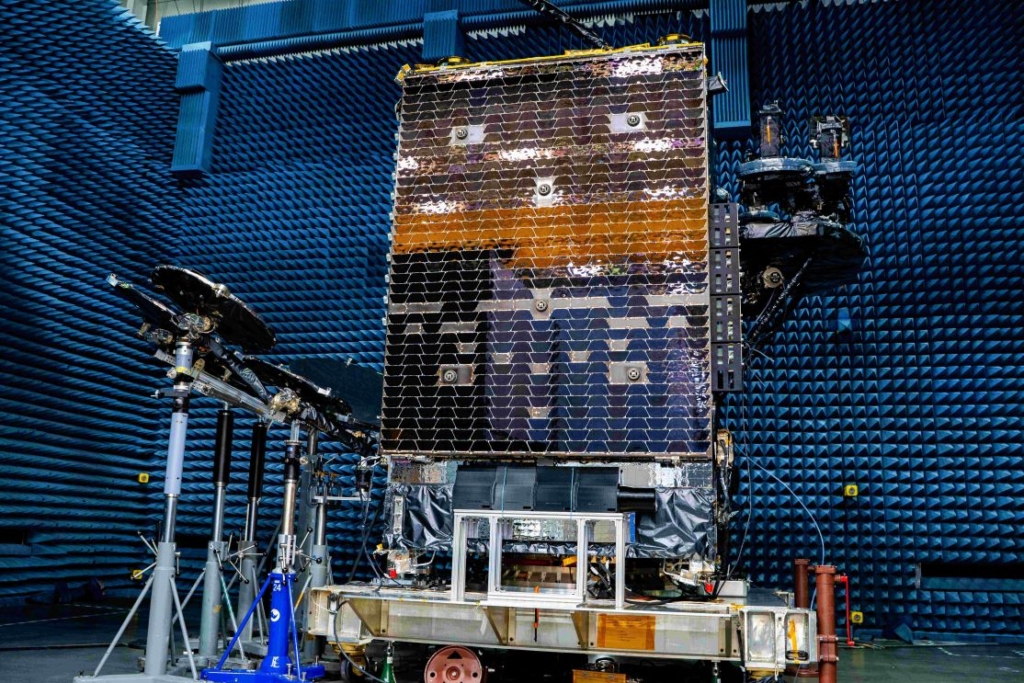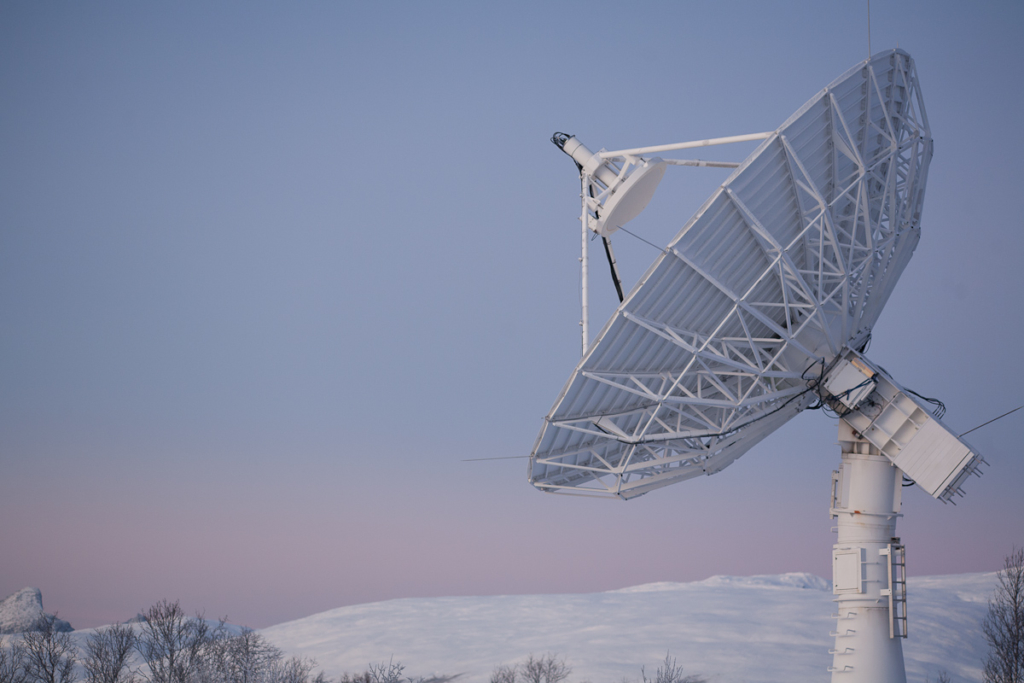
This is a SpaceNews article written by Sandra Erwin, June 9th 2022
The payloads are scheduled to lift off in 2023 on a SpaceX Falcon 9 rocket from Vandenberg Space Force Base
WASHINGTON — The U.S. Space Force announced June 8 it delivered the first of two military communications payloads that will launch in 2023 on Space Norway’s Arctic Satellite Broadband Mission known as ASBM.
The $1.3 billion Enhanced Polar Systems-Recapitalization (EPS-R) payloads – developed by Northrop Grumman — will fly to highly elliptical orbits on two ASBM satellites scheduled to lift off next year on a SpaceX Falcon 9 rocket from Vandenberg Space Force Base, California.
The mission also includes communications payloads for the Norwegian Ministry of Defense and for British satellite operator Inmarsat. The EPS-R are Extremely High-Frequency Extended Data Rate payloads that will provide secure communications services for U.S. forces operating in the north polar region.
15/06/2022
New technology from IDEAS and Space Norway keeps EU satellites safe
In a few years, the EU launches its next generation Galileo navigation satellites, the ones that give us positioning data, for gadgets such as mobile phones and watches. Together, Space Norway and IDEAS facilitate radiation data that will help the EU in planning the Galileo launch.
After detachment from the space rocket, it will take the Galileo satellites several months to reach their designated orbit, and during this period, they are exposed to severe radiation. The phase of finding its correct orbital path is called orbit raising, and for those who launch the satellites it is important to protect them as much as possible during this period. Space Norway is building two large satellites which will move in a highly elliptical orbit (HEO) in order to provide mobile broadband communication to the Arctic. For each orbit made, the satellites pass through the same altitudes as the Galileo satellites pass through during their orbit raising. With data from Space Norway’s satellites, the EU will have more accurate information about this radiation, and thus be able to better protect their future navigation satellites.
Space Norway and IDEAS cooperate in including a radiation monitor on one of the HEO satellites, and together they have made an agreement with the EU Commission on delivery of radiation data. With IDEAS’ monitor on board Space Norway’s satellite, Norwegian companies contribute to both national and European space targets and efforts. IDEAS is a Norwegian high-tech company with special competence within radiation, and with the support of the Norwegian Space Agency they have built a radiation monitor for mapping space radiation.
The monitor will deliver valuable radiation information from the unusual highly elliptical orbit, and from the Norwegian point of view, it is a considerable contribution to future space projects in the EU – especially to the EU navigation program. Based on traditionally important research within space weather and solar radiation, Norway demonstrates an important contribution to the EU space ambitions.
This cooperation is in line with the ambition of the new Norwegian space strategy of establishing robust space infrastructure supporting national security needs.

01/03/2022
Redundancy on primary telecom connection to Svalbard restored

Space Norway AS owns the fibre optic cable between Svalbard and mainland Norway. The cable is a key element of Norway’s infrastructure in the Arctic and provides broadband telecom services both to the civil society and the science and space activities at Svalbard. Since Friday, January 7th, 2022, the system has been operating without the full specified redundancy. As of January 18th, 2022, this redundancy is restored.
The Svalbard fibre system is built as a fully redundant solution with two cables separated approximately 5-10 km on the seabed. The redundancy ensures continued operations if one of the two connections fails to function. At 04:10 CET on Friday, January 7th, 2022, one of the two connections experienced a failure. This failure did not in any way change the ability to communicate effectively with Svalbard in the same manner as before, but it represented a temporary lack of redundancy.
The analysis of the failure indicated a shunt failure in the cable causing loss of power to some of the signal repeaters. Through a workaround applying an alternate power supply to the damaged cable, the redundancy was restored during the evening of January 18th, 2022. This minimizes the operating risk until final cable repair can be performed probably in the February 2022 timeframe, depending on the availability of the cable vessel and the necessary weather conditions.
POC at Space Norway: Dag H Stølan, Head of Infrastructure, +4740029601/ dhs@spacenorway.no
Space Norway to provide satellite-based Arctic broadband
Space Norway will cooperate with the satellite operator Inmarsat and the Norwegian Ministry of Defence to offer mobile broadband coverage to civilian and military users in the Arctic. Two satellites will be built by Northrop Grumman and are scheduled to be launched by SpaceX in late 2022. The ground station will be established in North Norway and ensure Norwegian control of this critically important capability.
“This will be a milestone for people in the Arctic who have very limited or no broadband access in the region,” says Jostein Rønneberg, Space Norway ́s CEO.“We are building a robust communications capability in an area strategically important to Norway and our partners. This will be vital for surveillance, fishery control and rescue operations in the vast sea area that is under Norwegian control, and will significantly improve our ability to operate in the High North”.
Space Norway, a limited liability company, owned by the Norwegian government, has established a new subsidiary company, Space Norway HEOSAT AS, to manage the program and operate the two satellites together with Kongsberg Satellites Services in Tromsø, Norway. The program is fully financed with customer agreements in place for the service life of the satellites.
“After a multi-year dedicated effort, we are both proud and happy to have closed customer agreements with Inmarsat and with the Norwegian and US militaries”, says Program Director Kjell-Ove Skare. “This is an exciting collaborative effort, which ensures a cost-effective solution for all parties. Now we are eager to start the real work of building the satellites and the ground stations. We look forward to providing the world’s first and only mobile broadband service in the Arctic region, something which has long been an important objective for the Norwegian authorities.”
Both satellites will be launched in late 2022 on a SpaceX Falcon 9 rocket into a Highly Elliptical Orbit (HEO), which will provide full coverage from 65 degrees North, which in practical terms is the area North of the Arctic Circle. Each of the two satellites will carry multiple payloads, and the system is scheduled to be operational for at least 15 years, with users able to switch between current geostationary satellites and the HEO satellites. Each satellite will have a mass of 2000 kg and provide six-watt power through their sun arrays.
16/05/2020
How to build a satellite – Preliminary and Critical Design Review
One of the first important milestones in a satellite project, is the Preliminary Design Review (PDR) and later Critical Design Review (CDR).
Satellites are still no run-off-the-mill product, and very few satellites are mass produced. Even the most common communication satellites and weather satellites are built one at time or in very few numbers and still they are moderated and adapted during production. Satellite projects are known for their considerable technical and economic risk. Our ASBM satellites are very large and very complex, and this means that even if the base principles are set, everything must be built from scratch.
The first thing to do as a customer is to send a Request for Proposal (RfP) to several satellite suppliers, detailing what kind of payloads will be on board, what kind of functionality is expected and other specific demands. In 2019, Space Norway selected Northrop Grumman as the ASBM supplier, and the design work started immediately.
Our satellites are communication satellites, meaning that the payloads consist of radio equipment for receiving signals from the ground and returning signals down to Earth. Because the satellites’ orbits go far out in space in its highly elliptical path, vast land areas are covered by the payload radios. The unique thing about the ASBM satellites is that one satellite alone delivers radio coverage all over the Arctic, and one satellite will always be visible over this area.
On board, antennas for both receiving and transmitting signals, signal filters that eliminate unwanted noise as well as a number of amplifiers are found. The amplifiers enhance the signals that are picked up from the ground before they are sent back down. Simplified, one could say that they pick up a whisper and shout it in return. The return signals are down converted in frequency to avoid interference to the receiving antennas on board the satellite.
All this activity demands power, and the power is produced by the large solar panels and large battery banks that ensure that the equipment functions when the satellites are not exposed to the sun. Temperature control ensures that everything functions on board under as normal as possible conditions even when the outside temperature varies between very cold and very hot. All these elements are tailor made to cover the specific demands that are made by the programme. Additionally, there is always a margin, and for the life span of a component, this will typically be around 50% performance above the need.
The first design phase ends with a preliminary design review, a PDR, where the supplier presents its suggestion for how the satellite would look and be built. It will display the placement of each component and unit, specify the performance each sub system would have, how to operate the satellites and so on. The PDR for ASBM was carried out in February 2020. After this point, it is still possible to make changes to the design, and the design is continually evaluated. Adjustments are made, mostly together with the suppliers of the payloads and this phase usually takes about one year.
Once all these important decisions are made, there is the critical design review, a CDR. For ASBM, the CDR was in August of 2020. Here, the final design is agreed upon, and further changes are not made. No further functionalities are added, and no more units are added to the satellite. CDR locks the design and construction, and building commences.
Landing rights in the US – and the Federal Communications Commission
One of the first things that must be done when you plan for a satellite launch, is to consider the countries the satellite will fly over when in orbit.
It is the satellite’s area of coverage that is important. When Space Norway decided to establish broadband mobile communication to the Arctic using two highly elliptical satellites, applications to the UN’s International Telecommunication Union (ITU) were made. The ITU is an entity for coordination seeking international coexistence, but without sanctioning powers over nations. The filing with the ITU secures, in general terms, the utilization of necessary frequencies for satellites in their specified orbits. The ITU has the complete overview over all spectrum filings, what it may be used for and what it actually is used for. Space Norway’s filings registered with the ITU is the first stop on the way to being able to use the frequencies on the satellites’ payloads.
Each country has its own national organization that coordinates the satellite operators’ filings with the ITU. In Norway, this is administered by the National Communications Authority (Nkom). The Nkom keeps track of all frequency use in Norway and has a national coordination role.
Some countries have organizations with more authority than others, for example the USA and Canada – and both countries are important for Space Norway’s Arctic broadband satellites since permission to use the systems in each country must be obtained. The telecommunications authority for the US is the Federal Communications Commission (FCC). Back in 2017, an application was submitted and later that same year, a conditional permission was granted. The condition was that an agreement be reached with all other satellite operators. This means that the real work begins with this permission. A satellite operator must make sure that their signals do not interfere with other signals and the other way around. See this article about this very demanding process. Space Norway immediately started dialogue with operators in the US (and the rest of the world) to analyze coexistence. For the US, this included for example SpaceX, with a very high number of satellites in low earth orbit, being one of the operators. Now, several years later, agreements have been made with SpaceX, One Web and Amazon, while some operators still remain. The FCC is an enforcing agency, and all operators with landing rights must pay a bond up to USD 5M. Operators that are not operational within six years after receiving permissions, risk loosing this bond. This is done to prevent spectrum harvesting, meaning that the very limited frequency resources are bound by systems not being built or put into operation. The way the US organizes this, is different from most other countries, but then nowhere else in the world is the activity level as high regarding the need for frequencies as in the US.
Landing rights are not needed in the EU, including Norway, but the need to manage frequencies is the same, and the ITU regulated coordination is done in dialogue with each country’s administration or with each operator.
As for some of the other countries in the Arctic, landing rights are needed for ASBM also in Canada, which was achieved when coordination with all relevant Canadian satellite operators were in place.


